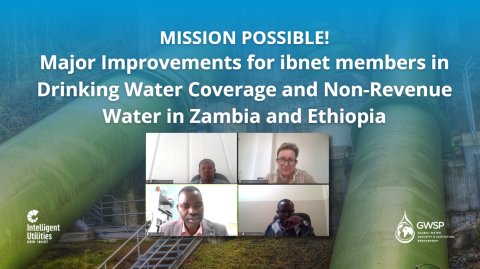On June 6, 2024, water utility leaders gathered to share their inspiring journeys toward achieving major improvements in drinking water coverage and reducing non-revenue water (NRW). The session highlighted the power of collaboration and technology-driven strategies in overcoming these critical challenges. Three water utility leaders from Zambia and Ethiopia shared their stories, revealing both achievements and hurdles in their respective regions.
Chris Kanyembo from Northwestern Water Supply and Sanitation Company Limited, Zambia, detailed efforts to expand water coverage in the rapidly growing district of Sewerwezi, where mining activities have spiked demand. His team forged partnerships with local industries to add 15 kilometers of distribution networks and boost production by 100,000 cubic meters per hour—significantly increasing connections and improving service delivery.
Felix Nsonde from Kafubu Water, Zambia, explained how his utility slashed NRW from a staggering 73% to 40% over five years by embracing metering, database cleanups, and targeted leak repairs. Felix shared his company's goal of achieving 100% metering across all production sites, zones, and customer premises, with the hope of further reducing NRW and improving service efficiency.
Gelana Mekonnen, manager of Nekemte City Water Supply and Sewerage Service Enterprise, Ethiopia, outlined efforts to enhance water supply coverage, which jumped from 53% to 76% through borehole expansions, quality control initiatives, and power stabilization. Nekemte's pilot project to implement smart water meters, particularly for high-cost customers, marks a critical next step in the utility's NRW reduction strategy.
A key theme in the session was the use of technology to drive efficiency. From Chris’s development of a meter reading app to Felix’s introduction of GIS tools and Gelana’s smart metering pilot, the utilities are leveraging digital tools to overcome challenges in monitoring, metering, and data management. These initiatives are expected to significantly reduce NRW while improving coverage and service delivery.
The collective drive toward metering, data-driven decision-making, and strategic planning demonstrates that major improvements in water utilities are not just possible—they are happening now.
Next Steps
-
Chris will finalize the meter reading app to minimize errors in data transfer.
-
Felix aims to achieve 100% metering by replacing old meters and monitoring progress through Excel, and GIS.
-
Gelana mwill pilot smart meters for high-cost customers, paving the way for future expansions.
The session left no doubt: with determination, strategic partnerships, and technology at their disposal, water utilities worldwide are making "Mission Possible" a reality.

